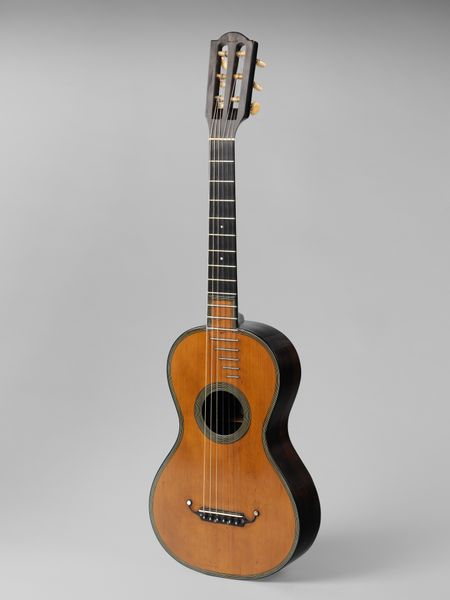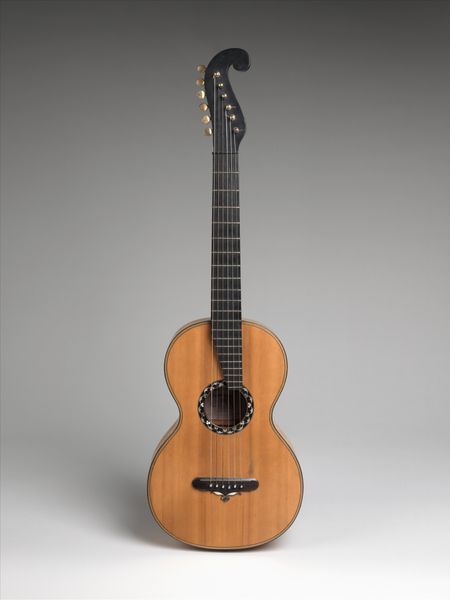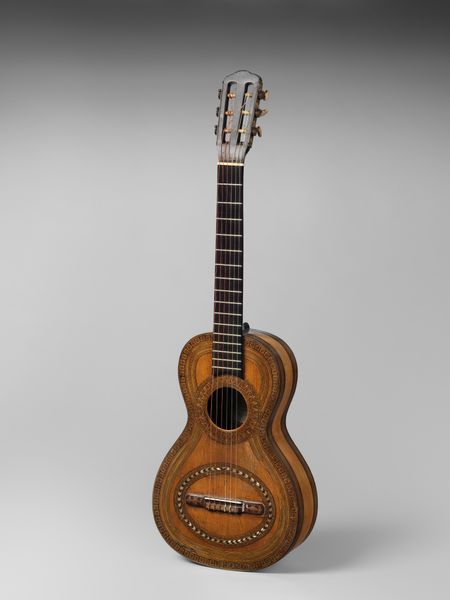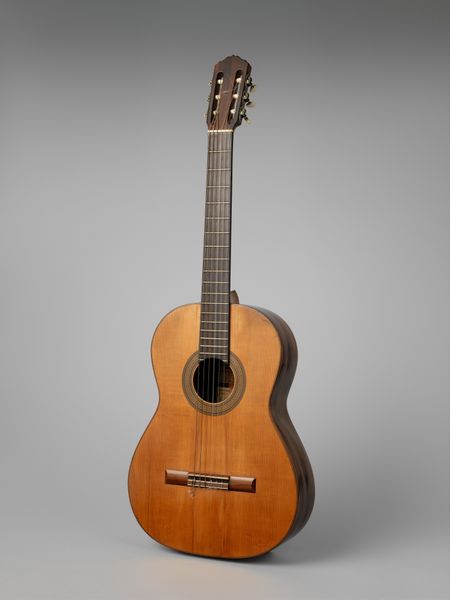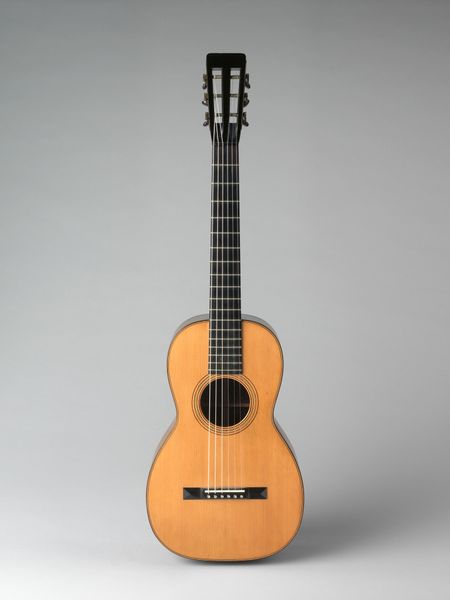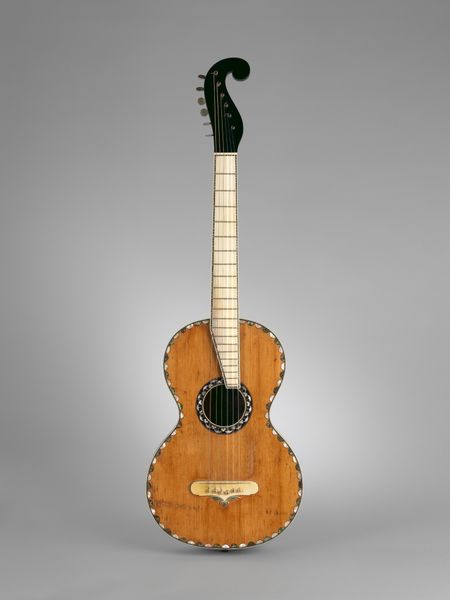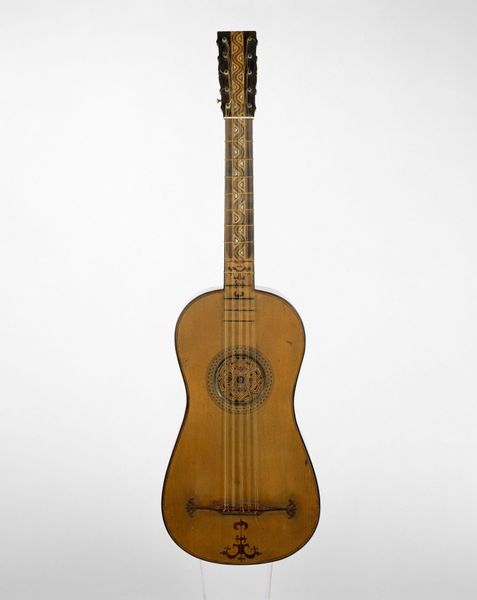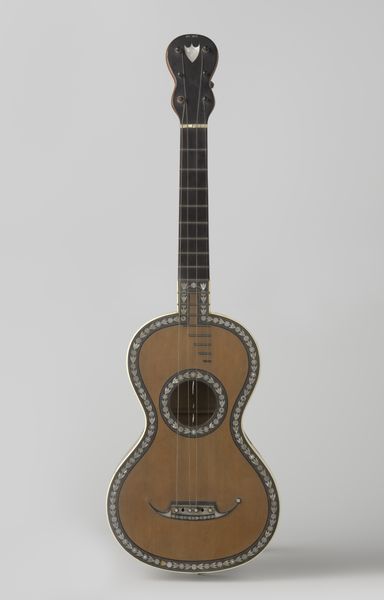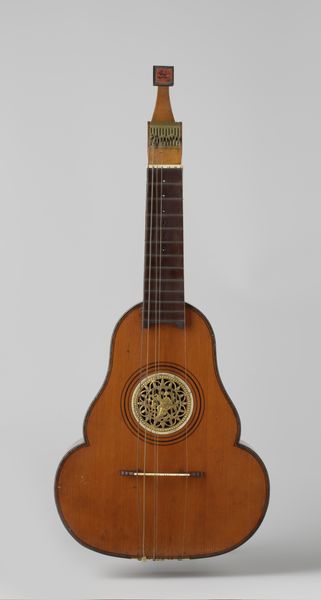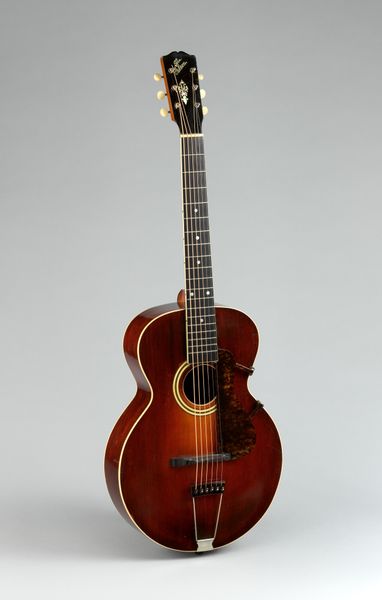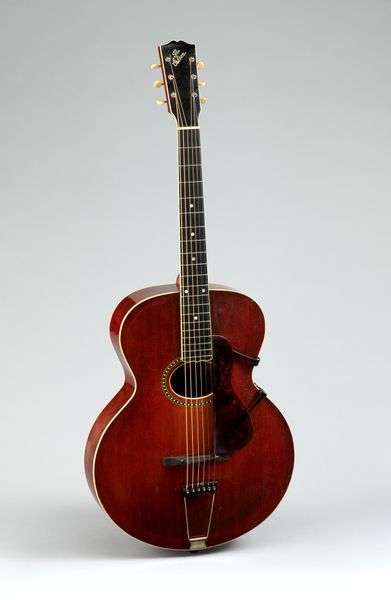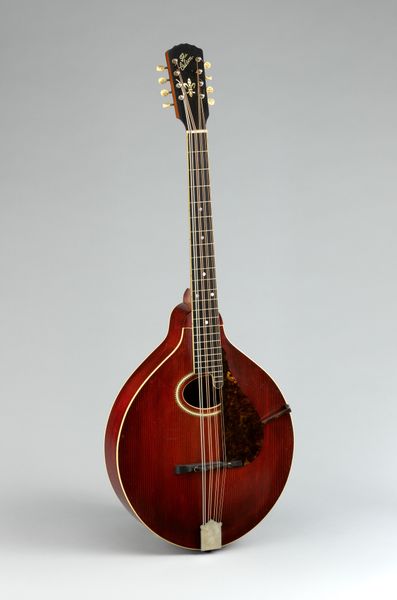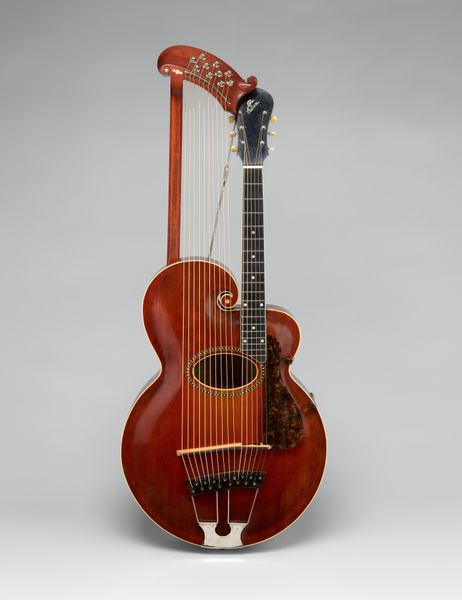
photography, wood
#
photography
#
wood
#
musical-instrument
Dimensions: 36 13/16 × 11 11/16 × 3 1/4 in. (93.5 × 29.7 × 8.3 cm)
Copyright: Public Domain
Curator: Welcome. Let’s spend a moment contemplating this fascinating photographic portrait of a guitar crafted by Joseph Bini around 1870. You can currently find this at the Metropolitan Museum of Art. Editor: My first impression is its delicate beauty. The wood grain is incredibly detailed, almost luminous. It projects such a feeling of craftsmanship and perhaps the intention of beauty it would inspire when in the hands of a performer. Curator: Indeed. Bini’s guitars are celebrated for their intricate designs and superior sound quality. What's interesting is to place such high quality artistry within the context of a society where music served not merely as entertainment, but also as a cultural and social conduit, with instruments playing an essential role in communal gatherings, personal expression, and class dynamics. Editor: It's also striking to consider who had access to instruments like this in the 19th century. Was it primarily enjoyed within wealthier circles, reinforcing class distinctions through artistic means, or did the music created bridge certain social divides? Curator: Bini targeted a market that would prize luxury. Yet we find, even then, certain instruments circulating through wider communities; sheet music and song books enjoyed much broader access, particularly during a surge in industrialization and the growth of the middle class. These forces propelled the mass production of musical instruments. Editor: I wonder about the emotional landscapes created by the sounds this guitar produced. What narratives were woven through song? What hopes and struggles echoed through each strum? How do those untold stories contrast with what we know of its place in the world of its day? Curator: It reminds me how art objects don’t just exist. They actively participated in constructing social reality, often perpetuating both ideals and hierarchies. Instruments can serve to reify traditions or also disrupt prevailing ideas by putting novel musical arrangements and performances out to larger audiences. Editor: Exactly. And sometimes they just simply serve the need to uplift—something much needed in times that otherwise grind down the individual. This object invites a broader interrogation of beauty and utility within a specific cultural context. Curator: Agreed. A testament to enduring human artistry. Editor: A chord still echoing across time.
Comments
No comments
Be the first to comment and join the conversation on the ultimate creative platform.
